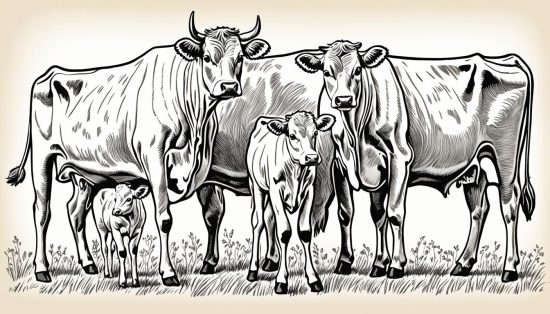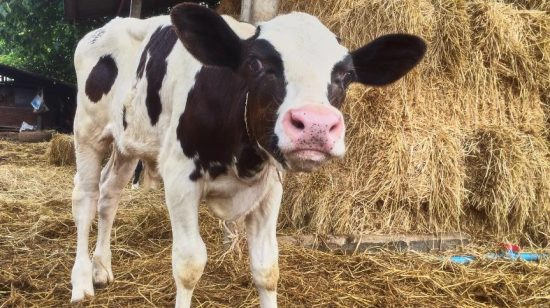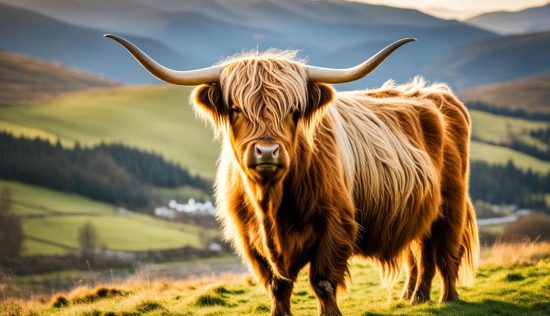How Much Milk Does a Cow Produce a Day? A Dairy Guide
Explore the surprising volumes of dairy production and learn how much milk does a cow produce a day in our detailed dairy guide.
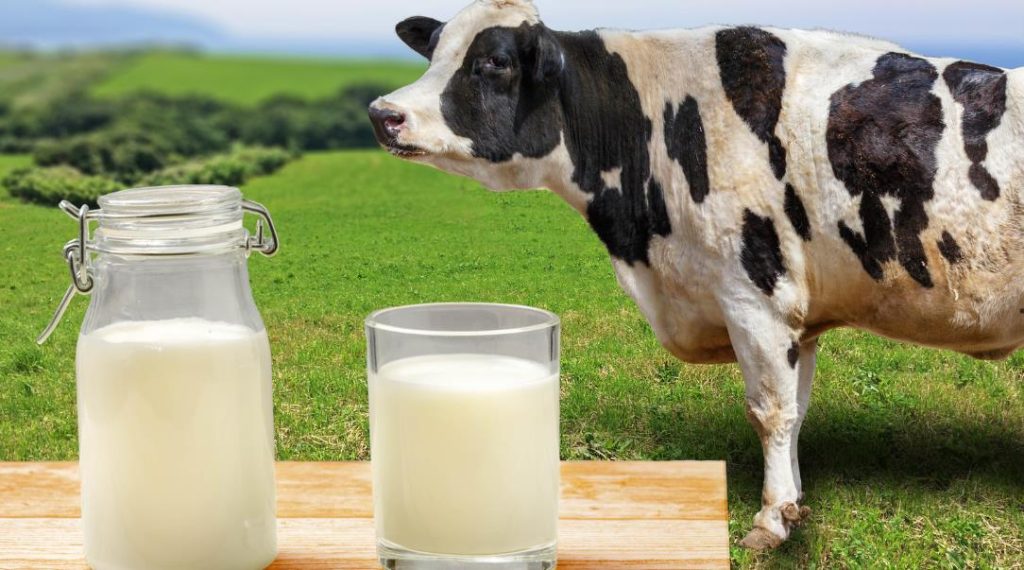
Did you know that a single dairy cow has the incredible ability to produce an astonishing amount of milk each day? We will explore the factors that contribute to the daily milk production of a cow. From the anatomy and diet of a dairy cow to the importance of hydration for milk production, we will uncover the secrets behind the impressive milk yield of these remarkable animals.
Understanding Dairy Cow Anatomy and Diet
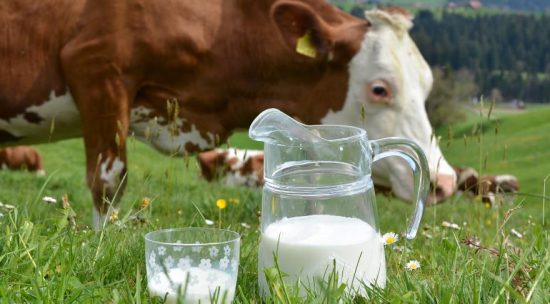
In order to understand milk production in dairy cows, it is important to have a basic understanding of their anatomy and diet. A dairy cow’s anatomy is uniquely suited to efficiently digest and process the nutrients needed for milk production.
Understanding the intricacies of a cow’s anatomy and its dietary needs is essential for optimizing milk yield, ensuring animal welfare, and maintaining overall herd health. We delve into the fundamental aspects of dairy cow anatomy, focusing on the structures directly involved in milk production. Additionally, we explore the significance of a balanced diet tailored to meet the nutritional requirements of dairy cows, thereby maximizing their milk-producing potential.
By gaining insight into the anatomy and dietary needs of dairy cows, farmers and enthusiasts alike can implement effective management practices to support optimal milk production, promote animal well-being, and contribute to the sustainability of dairy operations. Let’s explore the fascinating world of dairy cow physiology and nutrition to unlock the secrets behind successful milk production.
The Role of a Cow’s Multi-Chambered Stomach
An essential aspect of a cow’s digestive system is its multi-chambered stomach. This stomach consists of four chambers: the rumen, reticulum, omasum, and abomasum. Each chamber plays a distinct role in the digestion process.
The rumen, the largest chamber, serves as a fermentation vat where microorganisms break down fiber and produce volatile fatty acids. This allows cows to extract energy from complex carbohydrates that are otherwise indigestible to humans. The rumen is a vital part of a cow’s digestive process and plays a key role in its ability to convert plant material into milk.
The reticulum acts as a filtration system, separating solid particles from the digesta and preventing them from entering the rest of the digestive tract. It also aids in the mixing and breakdown of food. The omasum helps to extract water from the digesta, making it an important part of a cow’s overall hydration and water balance. The abomasum, also known as the “true stomach,” is similar to the stomach of monogastric animals like humans. It secretes digestive enzymes and acids to further break down food and initiate the absorption process.
What Constitutes a Dairy Cow’s Nutritious Diet
A well-balanced and nutritious diet is crucial for dairy cows to support milk production and overall health. A typical diet for a dairy cow includes:
- High-quality forages such as alfalfa, clover, and grasses provide necessary fiber, energy, and nutrients.
- Grains, such as corn and barley, are often added to the diet to provide additional energy and protein.
- Dairy cows require specific vitamins and minerals for optimal health and milk production. These are typically provided through specially formulated supplements.
How Much Milk Does a Cow Produce a Day?
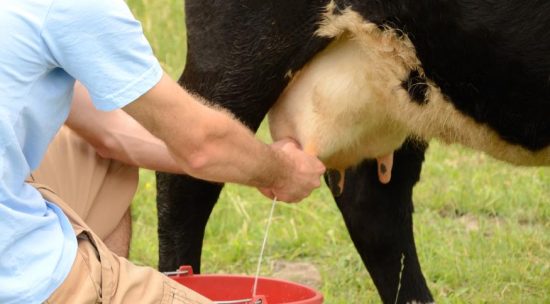
| Breed | Average Daily Milk Production | Notes |
|---|---|---|
| Holstein | 8-10 gallons (30-38 liters) | Most common breed in the U.S.; high milk yield |
| Jersey | 5-6 gallons (19-23 liters) | High butterfat content; ideal for cheese/butter |
| Brown Swiss | 6-8 gallons (23-30 liters) | Good balance of protein and butterfat |
| Guernsey | 5-7 gallons (19-26 liters) | High butterfat and protein content; rich color |
The Milking Process: Frequencies and Quantities
In the dairy industry, the milking process plays a crucial role in obtaining the milk that eventually reaches our tables. It involves carefully extracting milk from cows at regular intervals to ensure their well-being and maintain optimal milk production. We will discuss the milking frequencies and quantities on a dairy farm, as well as the factors that influence these aspects of the milking process.
Factors Influencing Milking Frequency
The milking frequency on a dairy farm refers to the number of times cows are milked in a day. It is influenced by various factors that contribute to the overall milk production and cow health. Some of these factors include:
- Different cow breeds have different milk production capabilities and may require varying milking frequencies.
- The milking frequency may vary depending on the stage of lactation a cow is in. Peak milk production usually occurs after calving, and the frequency gradually decreases as cows move towards the end of their lactation cycle.
- The quantity of milk produced by individual cows also affects milking frequency. Cows with higher milk production may require more frequent milking to prevent discomfort and maintain their health.
- The overall health and well-being of the cows play a significant role in determining the milking frequency. Cows that are healthy and free from any discomfort or health issues can be milked at regular intervals.
- The efficiency of the milking process itself can influence the milking frequency. Farms with advanced milking systems and equipment can milk cows more efficiently, allowing for increased milking frequencies.
Transition from Calving to Peak Milk Production
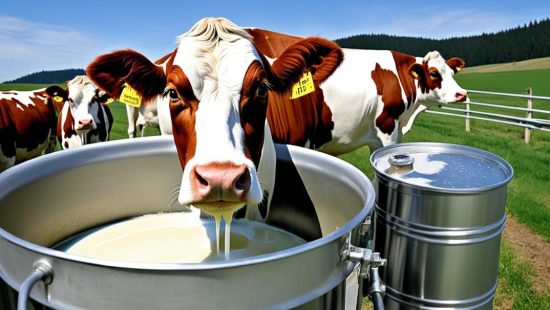
After calving, cows undergo a transition period where their milk production gradually increases until reaching their peak milk production. This transition phase is crucial for a cow’s lactation cycle. During this time, the milking frequency gradually increases to meet the increasing demand for milk.
The transition from calving to peak milk production typically takes several weeks, which may vary slightly depending on the cow breed and individual factors. It is essential to closely monitor each cow’s milk production and adjust the milking frequency accordingly during this period to ensure their well-being and maximize milk production.
| Cow Breed | Stage of Lactation | Cow Milking Quantities | Health and Well-being | Milking Process Efficiency |
|---|---|---|---|---|
| Jersey | Early lactation | High | Excellent | Advanced milking systems |
| Holstein | Peak lactation | Very high | Good | Modern milking equipment |
| Guernsey | Mid-lactation | Medium | Very good | Efficient milking protocols |
The table above showcases how different factors can influence the milking frequency on a dairy farm. It highlights the diverse needs of various cow breeds and emphasizes the importance of considering individual cow milking quantities, health, and overall milking process efficiency for optimal milk production.
Dairy Cow Welfare and Its Impact on Milk Production
In order to optimize milk production in dairy cows, it is essential to prioritize their welfare and provide them with suitable living conditions, proper medical care, and adequate temperature management.
The living conditions of dairy cows have a significant impact on their milk yield. One key consideration is whether cows have access to pasture or are housed in freestall barns. Dairy cows provided with pasture access tend to have a higher milk yield compared to those housed in freestall barns. Pasture grazing allows cows to engage in natural behaviors, such as grazing and socializing, which can positively influence their overall well-being and milk production. It also provides them with a diverse diet, which can result in higher milk quality and quantity.
However, not all farming systems allow for pasture access year-round. In situations where cows are kept in freestall housing, it is crucial to ensure that their environment is comfortable and meets their physiological needs. This includes providing suitable bedding, sufficient space for resting, proper ventilation, and access to clean water and feed.
Medical Care and Use of Antibiotics in Dairy Farms
Effective medical care is vital for maintaining the health and welfare of dairy cows, which ultimately impacts their milk production. Regular veterinary check-ups and timely diagnosis and treatment of health issues contribute to better overall cow health and milk yield.
The use of antibiotics in dairy farms should be managed judiciously, following appropriate protocols and guidelines. Responsible antibiotic use helps prevent and treat bacterial infections, safeguarding the health and welfare of cows. It is essential to prioritize the well-being of the animals while minimizing the risk of antibiotic resistance.
Temperature Management: Keeping Cows Cool and Comfortable
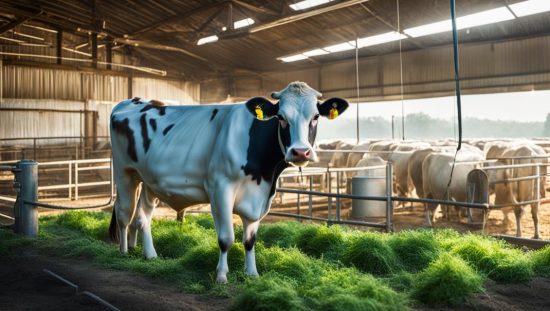
Temperature management plays a crucial role in dairy cow welfare and milk production. Cows are sensitive to extreme temperatures, and heat stress can negatively impact their health and milk yield.
Providing adequate shade, ventilation, and access to cool water can help alleviate the effects of heat stress on dairy cows. Additionally, implementing cooling systems such as fans, misters, and sprinklers can further enhance their comfort and well-being, leading to improved milk production.
| Living Conditions | Impact on Milk Yield |
|---|---|
| Pasture Access | Higher milk yield due to natural grazing behavior and diverse diet |
| Freestall Housing | Proper housing and comfort contribute to milk production |
From Farm to Fridge: The Lifecycle of Dairy Production
Now let’s look into the dairy production process and the journey that milk takes from the cow to your fridge. Understanding this lifecycle will give you a deeper appreciation for the dedication and care that goes into producing the milk you enjoy.
The journey begins on the farm, where dairy cows are carefully bred and raised to ensure optimal milk production. Through a combination of proper nutrition, access to clean water, and comfortable living conditions, farmers strive to create an environment that promotes the health and well-being of their cows. This, in turn, directly impacts the quantity and quality of milk they produce.
Once the dairy cows are ready for milking, the milking process begins. Modern milking machines allow for efficient and hygienic milking, ensuring that the milk is collected safely and promptly. After milking, the milk is stored in large tanks on the farm, where it undergoes strict quality control measures to ensure its freshness and purity.
Next, the milk is transported to a dairy processing facility. Here, it undergoes a series of steps, including pasteurization, homogenization, and packaging, to ensure its safety and longevity. Once these processes are complete, the milk is packaged and distributed to various retailers, where it can be purchased by consumers like you. From the retailer, the milk finally makes its way to your fridge, ready to be enjoyed by you and your family
FAQs on how much milk does a cow produce a day
What constitutes a dairy cow’s nutritious diet?
A dairy cow’s diet consists of a balanced combination of forages (such as hay and silage) and concentrates (grains and protein-rich supplements). This diet ensures that cows receive essential nutrients like carbohydrates, protein, vitamins, and minerals necessary for milk production.
How important is hydration for milk production?
Adequate water consumption is vital for milk production in cows. A lactating cow may consume around 80 to 180 liters of water per day, depending on factors like environmental temperature, diet, and milk yield. Water helps maintain proper hydration and supports milk synthesis.
What factors influence milking frequency?
Milking frequency on a dairy farm depends on factors such as cow comfort, milk production, farm management practices, and milking equipment availability. Generally, cows are milked two to three times a day to maintain milk production and prevent udder discomfort or other health issues.
How does a cow transition from calving to peak milk production?
After calving, a dairy cow undergoes a process called the lactation cycle. Milk production gradually increases, reaching peak levels at around 45 to 60 days post-calving. The cow’s diet, health, and overall management during this period play a crucial role in achieving optimal milk production.
Does cow welfare affect milk production?
Yes, cow welfare directly impacts milk production. Providing cows with good living conditions, such as access to pasture or comfortable freestall housing, promotes their well-being and enhances milk yield. Additionally, proper medical care and temperature management contribute to the overall health and productivity of dairy cows.

